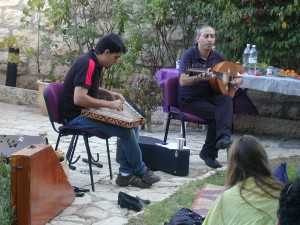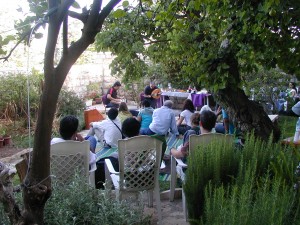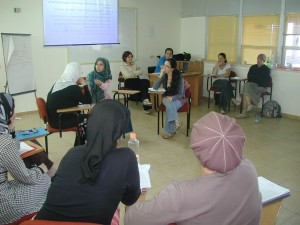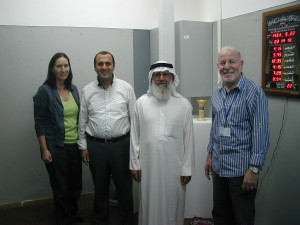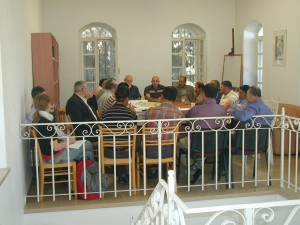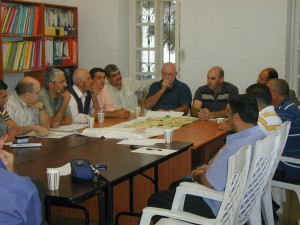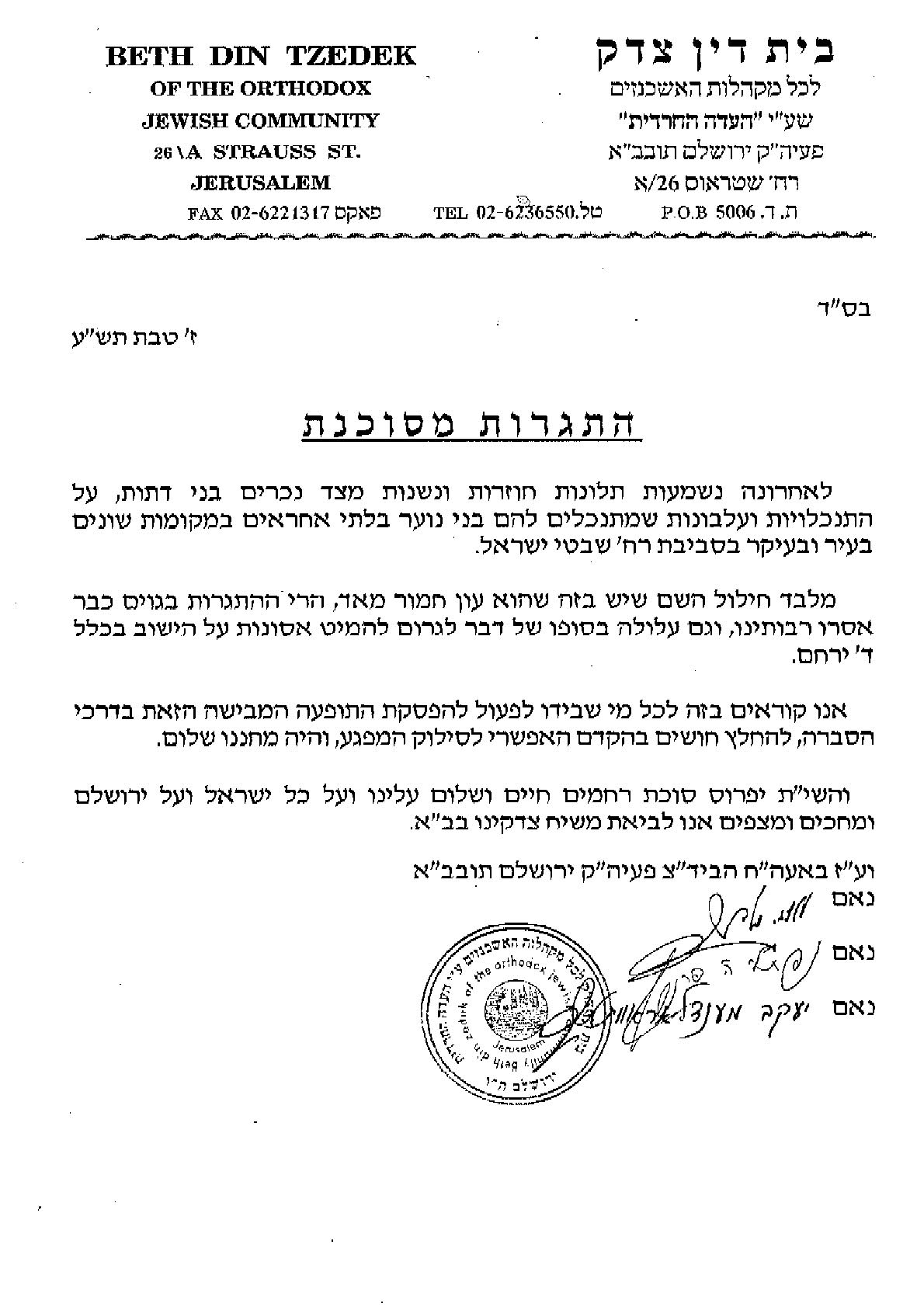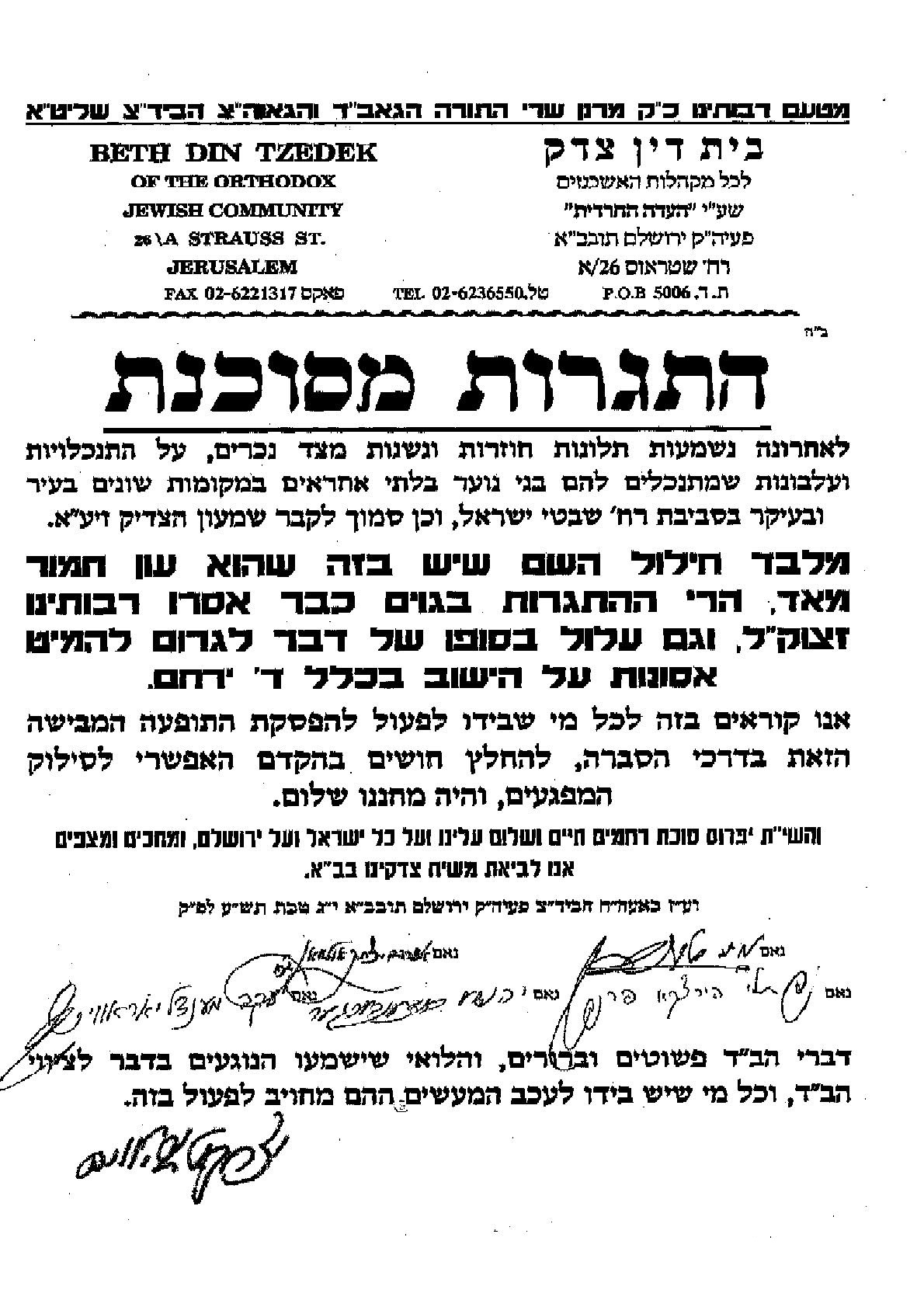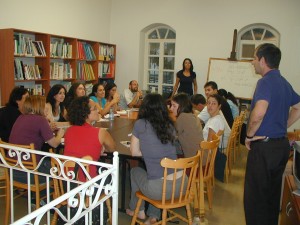Speaking Art Conference: Triggering Activity year-round – Follow-up Meeting on June 2010
By Naomi Roff Kohn, The Jerusalem Foundation:
Year after year participants in the Speaking Art Conference for Jewish and Arab arts professionals, held every December for the past 6 years, respond that they wish to stay in touch with the friends and contacts they meet at the conference. Responding to this feedback, and in an effort to expand the impact of the Conference to continue throughout the year, on June 17, 2010, the Jerusalem Foundation and the Jerusalem Inter-Cultural Center hosted a full-day seminar for dozens of Jewish and Arab Speaking Art participants at the JICC main office on Mt. Zion. Participants from all 6 previous Speaking Art conferences were invited to attend.
In the morning some 25 Jewish and Arab participants – musicians, actors, movement professionals – took part in a photography workshop, led by Yoram Peretz, a professional photographer, instructor at Kaye College in the Negev and experienced group facilitator, especially in multi-cultural settings. Participants, working in 3 smaller groups, raised questions such as: ‘How do I view the ‘other’? How do I want the ‘other’ to view me? How does each of us translate the concept, ‘meeting / encounter’?’
After lunch they enjoyed a tour of David’s Tomb, the room of the Last Supper, and Dormition Abbey, all of which are located near the JICC offices on Mt. Zion. For many it was the first time they were introduced to these unique sites, which are holy to Jews, Christians as well as Muslims. David’s Tomb is noted in both Jewish and Muslim tradition and has religious significance for both religions. Christian tradition notes that Jesus’ Last Supper took place in a room above David’s Tomb. In addition, the Virgin Mary is supposed to have fallen asleep on Mt. Zion for the last time; on this spot the beautiful Dormition Abbey now stands.
“This seminar came about as an effort to expand the impact of the Speaking Art Conference, and explore possibilities to strengthen it for the future,” said Nadim Sheiban, Director of the Projects Department of the Jerusalem Foundation and one of the initiators of the conference. “For example, we tried the photography workshop today and, because it is an important medium that enables dialogue between Jews and Arabs, we are considering adding that to the Conference. I know participants were enthusiastic about their experiences today; we will bear this feedback in mind when we get to the detailed planning stages.”
After the informative tour of the Mt. Zion area participants went to work. One group discussed the macro – they worked together to examine the overall vision for the conference and how to create a synergy between professional development for artists and Jewish-Arab dialogue. A second group discussed the micro – specific suggestions for new disciplines, different kinds of workshops, different moderators and guest facilitators, etc. for the upcoming Speaking Art Conference. In future meetings of the Speaking Art Steering Committee these suggestions will be discussed and implemented, if feasible.
The day came to a close in the JICC’s charming garden, with a Oud and Canoun concert, led by renowned oud musician, Sameer Makhoul. As the concert progressed, participants joined in, the fruits of informal practice gatherings since the last Speaking Art Conference. Some contributed on their musical instruments (violin, guitar, darbouka drum), some in song, and some in dance.
“A number of the participants [of Speaking Art] make contacts at the conference and they wish to continue to meet throughout the year,” said Hagai Agmon-Snir, Director of the Jerusalem Inter-Cultural Center. “Many indeed meet on an informal basis. I’m glad that we were able to bring together a strong core of people, most of whom have participated in the conference for several years, to get people excited and thinking about the one to come.”
This report was published at the Jerusalem Foundation website.


